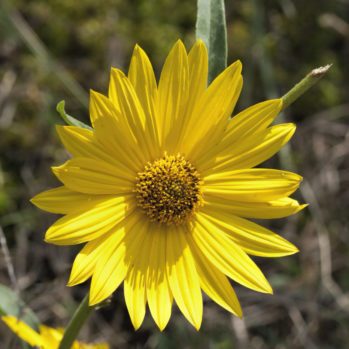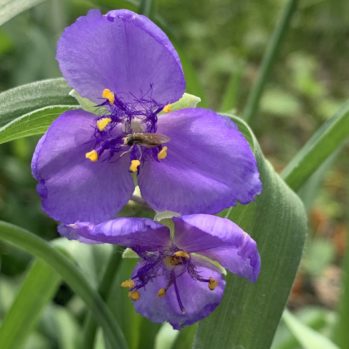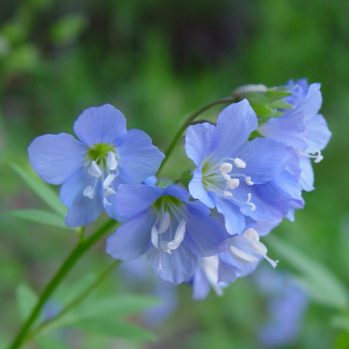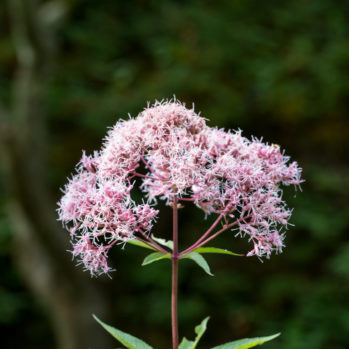 Water. It sounds easy. However, if you overwater or underwater the result is the same. Then there’s water quality. All water is not created equal. Pond water, river water, well water, municipal water, rainwater; they’re all wet so they should work right? The short answer is unfortunately NO.
Water. It sounds easy. However, if you overwater or underwater the result is the same. Then there’s water quality. All water is not created equal. Pond water, river water, well water, municipal water, rainwater; they’re all wet so they should work right? The short answer is unfortunately NO.
On this page we’re going to take a look at water quality as a function of irrigation. We’re going to look at different sources of water, their individual chemistries and why they may or may not work for your plants. Keep in mind that even though your water may be suitable for drinking it may not be suitable for irrigation, especially over a long period of time.
First, let’s start with pond, lake, stream or river water. These collectively are known as surface water sources. Runoff from the surface of the land collects in these bodies of water and we pump it out to irrigate our plants. What’s important to understand here is that the water in these bodies has not been pumped up through the bedrock beneath the soil as it would from a well. The water runs right off the land into the river or pond and does not percolate or go through the bedrock. Despite the fact that it may be muddy, surface water is generally considered to be a good quality source of water. What is meant by a “good quality” source of water? This would be water that is generally free of or has low levels of ions or other chemicals that would negatively affect plant growth. There may be herbicides or fertilizers in that water but (hopefully!) they are present in such small amounts as not affect plant growth. These chemicals are often seasonal in their appearance. For instance, you may hear on the local news that your municipal water provider is issuing a nitrate advisory. Due to recent heavy rains nitrate fertilizers from agriculture have washed into local rivers and lakes used for water sources and are above their desired levels. An alert is issued to safeguard sensitive groups (infants under six months, pregnant women and others). Plants can actually benefit from nitrates in the water but even an amount that would trigger an advisory does not promote much plant growth. The abundant supply of water serves to dilute the chemical to a level where they are not injurious to plants. While in a perfect world we wouldn’t have to deal with such issues the fact is chemical runoff is probably to be expected unless your body of water is separate and protected from fertilizer and herbicide applications.
Well water can be a problematic water source for irrigating plants. If your bedrock is limestone it’s going to be more difficult than if your bedrock was sandstone. Well water is water pumped from an underground aquifer upwards and into your home. The depth of these wells varies depending upon how far down it must be drilled to reach water. Typically, 100′-300′ is normal although some wells may go to 500′. Rainwater ultimately feeds your aquifer. When rainwater is formed by condensing water vapor up in the clouds it is pure water (for now we’ll disregard impurities or pollutants in the air). As this pure water falls as rain, carbon dioxide, CO2, dissolves into it making the rainwater a weak acid. This weak acid is not harmful to your plants. When the weak acid falls onto the ground and percolates through to your limestone bedrock it begins to dissolve your limestone. Limestone is simply a chalky, white mineral made of calcium carbonate, CaCO3. It is this dissolved limestone bedrock that creates the problems with well water for irrigation. Primary among them is the change in water chemistry due to alkalinity. This is what creates hard water issues for homeowners. Over 80% of US states have issues with hard water.
Alkalinity is a measure of the water’s ability to neutralize acid. If you remember back to chemistry class, the pH scale ranges from 1-14 and acids have a pH from just under 7 and lower. Alkaline or basic substances have a pH from just over 7 and higher. Right in the middle, at pH 7 is the sweet spot where the substance (in this case water) is neither acidic nor basic; it is neutral. A pH around 7 generally works for plants although it can range from pH 5 to pH 8 for certain species. Well water can be high in alkalinity because it contains components of the dissolved limestone. Even though the pH of your well water may be at 7, the alkalinity from the dissolved particles is just as important or perhaps more so. What happens when you use water that is high in alkalinity for irrigating your flowers, trees or garden? Soil and potting media is often at least slightly acidic. If you water your plants with high alkalinity water, the chemical deposits in the water begin to accumulate in the soil or potting mix. In time, these deposits increase the pH to the point where the plant cannot take up nutrition. Remember that a change of pH of just 1 point, from 7 to 8 for example, is a 10X change in alkalinity. In other words, it’s a huge change in soil chemistry. After a while the upward creep of pH changes the chemistry of the soil so much that the plant cannot take up the needed nutrition through its roots. The soil particles now bind the fertilizer chemicals so tightly that the plant cannot use them.
The problems with alkalinity ramp up more quickly in container grown plants. Since there is a finite amount of acidic media in the container it can get neutralized relatively quickly. Smaller pots are affected more quickly than larger pots. So, if you’re planning on growing plants in containers for your patio, driveway, walkway, flowerboxes and even growing vegetables in containers this information is for you.
The solution for this problem is simply not to use well water to water your plants. A relatively easy alternative is to collect rainwater in rain barrels stationed at the bottom of downspouts if you don’t have a pond or a cistern. Rainwater is liquid gold for plants. Rain barrels can become breeding grounds for mosquitos so be sure to screen the top of the barrel to keep them out. If you plan to use your well water, make sure the area you are watering is not allowed to totally dry out. By keeping the dissolved limestone in solution (i.e., not allowing the growing medium to dry out) it is far less detrimental to your plants. You can do this by installing a drip irrigation system into your flower or garden beds and applying several inches of mulch on top to keep the soil cool and to keep it from drying out. As the irrigation water dries, the offending chemicals continue to concentrate until they form a solid. If this solid is formed around roots it can actually draw water out of the roots. Keeping the soil or potting media from drying out is important because when a heavy rain does return, these chemicals can be flushed or rinsed out of the root zone thus improving the soil chemistry. If the soil is allowed to dry out and the crusty deposits have formed, they will be rinsed as well but it would take a heavier rain to do so.
Here in our home landscape, we initially only had well water to irrigate. I watered pin oaks over the course of a summer and by summers end the leaves looked as if they had been burned by fire. After leaf tissue tests were conducted, we found a manganese deficiency brought on by the binding of these ions to the soil making them unavailable to the trees.

Water that is rich in carbonates is known as hard water. The carbonate species include carbonates, bicarbonates and carbonic acid. These chemicals function to resist changes in pH in irrigation water and in soil. If your irrigation water is high in these three species (ie you have hard water) it can cause your soil pH to rise to undesirable levels. Soil that is high in pH binds the nutrients tightly to soil particles instead of letting the roots absorb it. The result is the plant declines due to lack of nutrition even though you have applied fertilizer.
As mentioned earlier, hard water in your home creates the chalky white residue on glassware, dishes and countertops. Softening the water is one way to remove some of the unwanted chemicals from your water. Your homes water softening system is termed an ion exchange system. Softening the water removes the calcium and the magnesium but replaces it with something worse: sodium. The sodium comes from the salt you load into the softener. If you use softened water to water your plants, you are actually giving them a solution that is high in sodium. Some authors report using a little softened water during a severe dry spell will not hurt the plants. Others say any use of softened water is detrimental to plants. We’re in the latter camp here. The harder your water is the more salt is needed to achieve “soft” water quality. A quick check of water hardness in the United States finds only 9 states along the East Coast (primarily) do not have hard water issues. The rest of us do.
Municipal water is generally considered a high-quality water for your plants. Although it contains chlorine as a disinfectant and fluorine for dental health both can be injurious to plants if you’re growing sensitive species. Fortunately, most perennial species are not sensitive to these ions. Your local municipal water source is able to provide up-to-date water quality reports including test results so check for these online or call them directly.
Rainwater is the natural way to water your plants. It’s relatively pure, and it has a slightly acidic pH which does not harm plants. The trouble is that timely rainfall cannot be counted on to irrigate your plants. Rainfall can be collected in barrels, cisterns or even small, manmade ponds for storage.

Check with your local state university extension office to see if they offer water testing. In the past many did offer this service but now many are not. Water testing by independent labs should not be overlooked especially for well water. The numerous tests performed give an accurate and reliable picture of your water quality. Armed with this information, you can make accurate decisions about how to best use your water to provide the best growing conditions for your plants. The type of test you’re looking for is an irrigation water quality test. You’ll want to get at least the following tests:
Your lab may include other tests as well and may include information on how to mitigate your water if one or more of the test values comes back too high or too low. The lab should provide contextual information so you can make sense of the results. Your county Soil and Water agents will have access to information that can help you understand your water quality and how it affects your soil quality and plants.